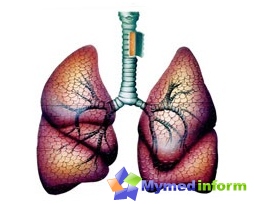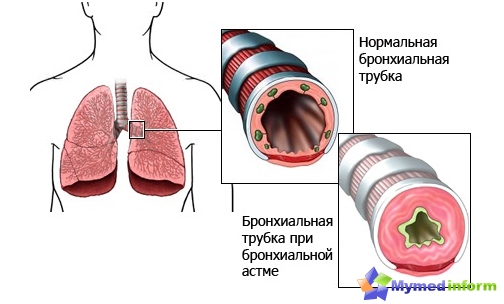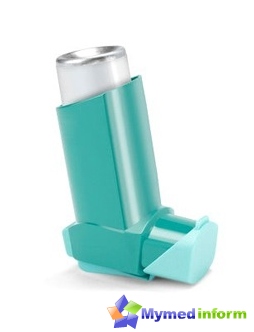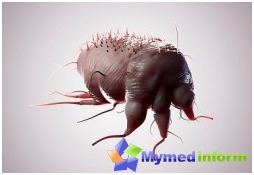
Bronchial asthma - widespread disease. Currently, the number of patients continues to increase, despite earlier diagnosis and modern approaches to treatment. There are more than 150 million people suffering from bronchial asthma in the world.
With bronchial asthma, there is a chronic inflammation in the respiratory tract, which, when aggravating, causes an attack of suffocation. Attack can be short-term or long. Often, in the early stages of the disease, attacks pass by themselves, and a person does not suspect Diseases. Over time, without the treatment and prevention of episodes, choking occurs more often and occur whether. As a rule, at this stage, a person appeals to the doctor. Bronchial asthma has a family character, which means that the predisposition is transferred to it by inheritance. Asthma has a risk of one of the parents Diseases in the child, in both parents - increases it even twice. Children and the elderly falls ill happened.
Causes

The reasons for the development of bronchial asthma may be several. There are generally accepted risk factors provoking its development:
- Household allergens (home and paper dust), pet allergens (dog wool, cats), disputes of mushrooms;
- Allergens, widespread in the environment: pollen of herbs, colors, shrubs, trees;
- Food allergens also matter;
- Smoking is active and passive;
- Professional allergens, such as paints, varnishes and t.D.
Play a role in the occurrence of bronchial asthma and frequent virus respiratory infections. It is more characteristic of young children. More older children are not only an orvi, but allergic. In adults, the disease is more often developing due to the impact of allergens associated with their profession. Their causes of the development of bronchial asthma may be ecological disadvantages - asthma is significantly more common in large cities and industrial areas. Important lifestyle playing great importance, cold and humid climates adversely affect.
Symptoms
The main symptoms of bronchial asthma:
- Repeating attacks of suffocation with whistling wheezing in exhalation, when a person to relieve breath takes a forced position: sits, resting his hands in his knees, tilting the torso ahead;
- shortness of breath (difficulty breathing) is more often at night, the patient wakes up due to the lack of air or cough;
- provoking the attack can physical exertion, emotional stress, inhalation of allergens;
- often colds Dragged longer than 10 days, and there is a feeling that the cough falls deeper;
- Dyspnea quickly passes when taking bronchodilitics (drugs expanding the bronchi);

An acute or more gradual beginning of the attack of suffocation may be observed. But, no matter how it was, all patients during an attack requires medical care. If the episode of the suffocation arose for the first time, our site recommends a survey from a pulmonologist.
Treatment of bronchial asthma

In recent years, the attitude towards the treatment of bronchial asthma has changed. This is due to the fact that scientists have identified the decisive role of allergic inflammation in the respiratory tract and hyperreactivity (increased sensitivity) of the bronchi. There are two large directions in the treatment of bronchial asthma: basic anti-inflammatory therapy and emergency care in the attack. In our country, for example, there is a national bronchial asthma program in children.
Our site would be able to warp: the following material is informational and noticeable and in no way leadership for self-treatment. A complex of measures for the treatment of bronchial asthma is selected strictly individually based on data on the severity of the disease. As a rule, gravity is exhibited after a complete examination and analysis of symptoms of the disease.
- Bronchial asthma of easy degree: the attacks are rare (on average 1-2 times a month), quickly undergo without treatment or using drugs. Outside the attack, health does not suffer.
- The average degree is characterized by attacks heavier with the capture and involvement of the circulatory system (heartbeat, muffling of cardiac tones). Inhalation of bronchospaszyolitikov is required.
- Heavy asthma - frequent attacks, every day or 2-3 times a week, is a danger to life and requires emergency measures. Between the attacks are saved shortness of breath.
Basic anti-inflammatory therapy includes: corticosteroids (hormonal drugs) in tablets or inhalations. Moreover, inhalation corticosteroids are most preferable, as they have a number of advantages: the highest effect is delivered directly to the respiratory tract and do not cause severe side effects. Inhalation forms include: Aldezin, Bekotide, Beclaison, Budesonide, Pulmikort, IngaKort. Powerful anti-inflammatory effect has inhalation drug Intal (Cromoglikat sodium), Torály (underwent sodium). These drugs are accepted by long-term courses. With exacerbation of the disease, it is necessary to assign additional drugs, and after the attack, basic therapy continues.
Emergency care in the attack of bronchial asthma:

- Remove causal allergens;
- provide fresh air access, unbutton clothes;
- Appoint one of the drugs with bronchospasmolytic action: Berothek N, Salbutamol, Berodal. 1-2 doses are introduced using a dosing aerosol inhaler or through a nebulizer (the gap between inhalations 2 minutes);
- You can give a patient with 1 Eufillin tablet;
- repeat inhalation, if there is no effect after 20 minutes;
- When increasing choking cause «ambulance».
At bronchial asthma there should be a constant close contact with the attending physician. As already mentioned, an individual treatment plan is drawn up for each patient. The plan should be flexible, changing depending on the severity and duration of the disease. The patient is constantly informed by the doctor about new methods of treating disease. One of the important points in the treatment of bronchial asthma is a step approach. When an increase in the symptoms of bronchial asthma, the patient passes to a higher stage and the treatment changes. When weakening the symptoms and the preservation of their manifestation at such a level for 3 months, the stage decreases to almost complete abolition of drugs. The main goal is to achieve a long-term remission (the complete absence or gentle of the attacks of suffocation).
As a result of this approach to the treatment of bronchial asthma, the doctors got the opportunity to control the disease and prevent attacks. The quality of life of such patients has become much higher, and life expectancy has increased.
Prevention

As the prevention of bronchial asthma, experts recommend physical education classes, swimming. It is useful to inflate balloons, as the life capacity of the lungs increases. Effective and respiratory gymnastics. Positive charge gives walks in the fresh air (in the forest and in the park) in any weather. But at the same time, naturally, it is necessary to try to avoid factors contributing to the development of asthma. Although completely eliminate such allergens as animal wool, pollen and dust, it is extremely problematic, you can only reduce the contact time with them. If allergens are associated with your profession, it is recommended to change the place and / or working conditions, or even move to another locality.
And, of course, it is necessary to avoid inflammation of the upper respiratory tract and timely treatment.









